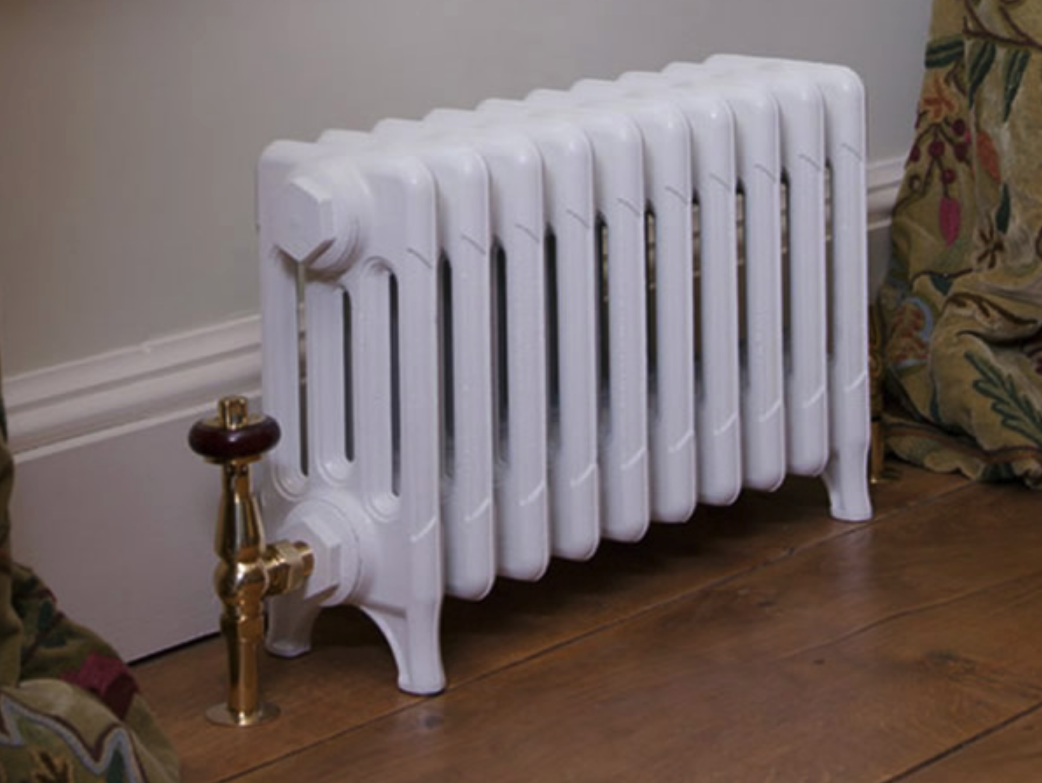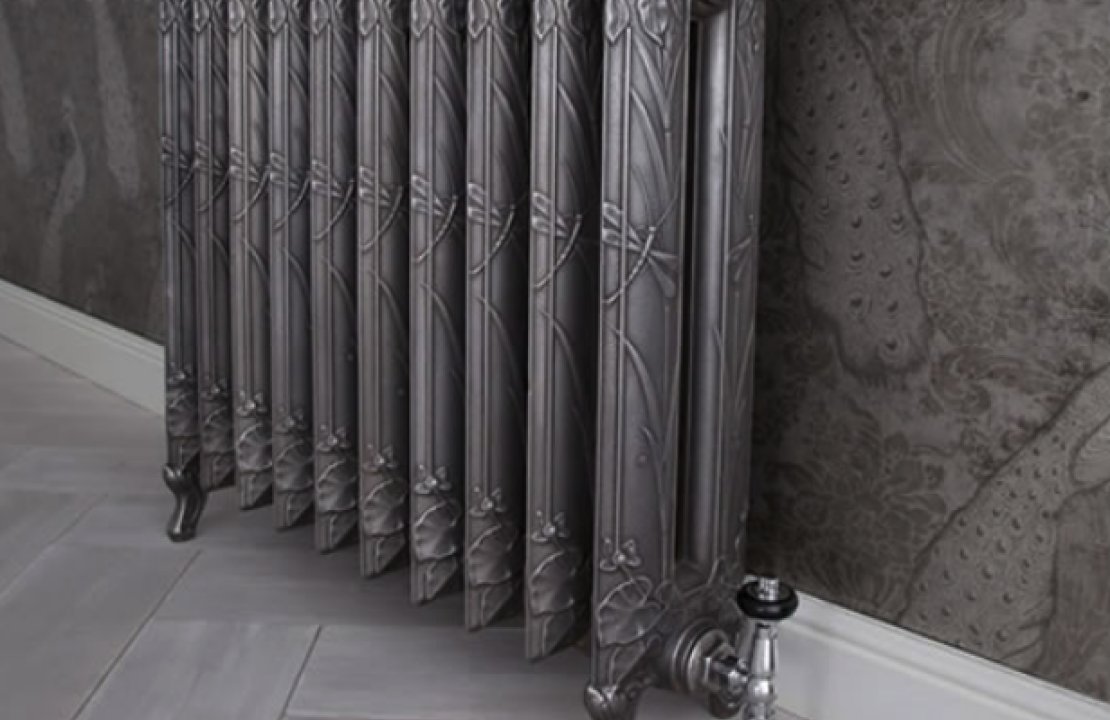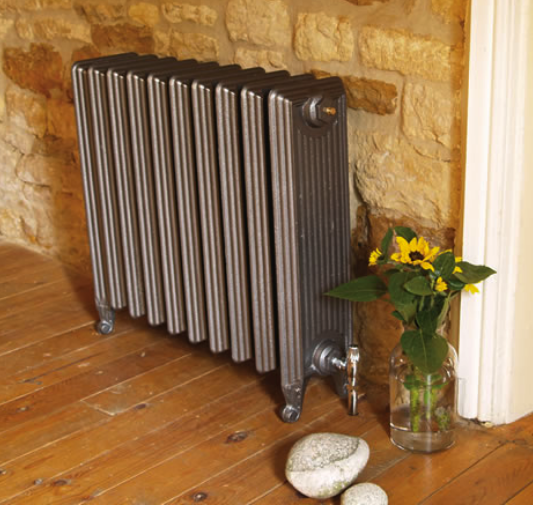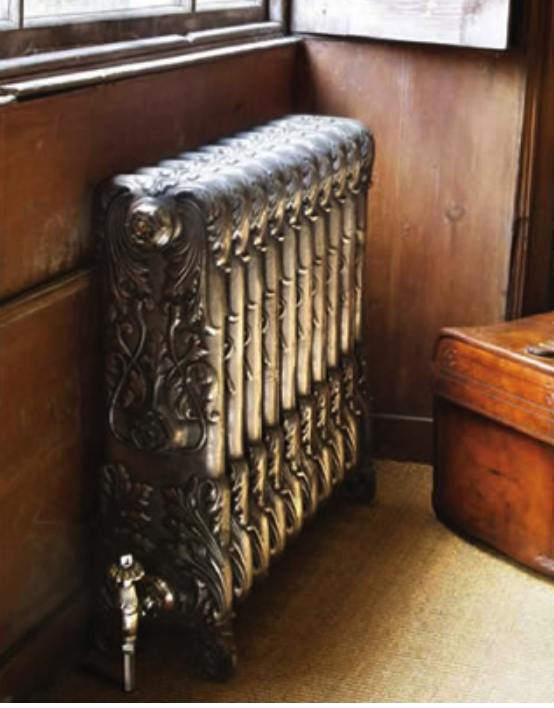Cast iron radiators can be very beautiful and are available in a wealth of different heights, widths, designs, paint effects and as such generally cost more than their modern steel equivalents. They are also very heavy and each section is hand cast so can have slightly different characteristics. We often get asked by uncertain customers whether, because of the volume of water they can hold and how heavy they are, are cast iron radiators more expensive to run.
The simple answer is they are not more expensive to run than any other metal radiator such as ones made from aluminium or steel however they don’t work in an identical way due to the differences in materials and size, and these differences should be borne in mind before purchasing and installing them.
A cast iron radiator should be viewed as an investment piece – when they look tired and the paint is dull, you can repaint them. A steel radiator however would most likely be thrown once the paint starts to be chipped and discoloured as it is seen as disposable. Cast iron radiators should also increase the value and desirability of your house in the same way as any quality fixtures and fittings – they are truly an investment piece and would even be worth something second hand if you wanted to later sell them.
A cast iron radiator is slower to heat up than it’s steel equivalent but once it heats up, stays warm for longer, which means it’s perfect for locations where low level heating is required to be on most of the time such as hotels, restaurants, pubs and homes. It’s much quicker and takes less energy for a radiator to heat up if it isn’t ever allowed to get completely cold.
If your cast iron radiator is in a location where it isn’t required to be on for long periods of time such as an office location over the weekend, we suggest you use a thermostatic radiator valve and set it low whilst leaving the heating on so that a low level background heat is maintained in the building, with the ability to increase the temperature on the thermostat when you need any extra heat.
Use of cast iron radiators could well mean less wear and tear on your boiler as when the temperature drops, it will not take so long to get back up to the temperature set on the thermostat as a steel version where the temperature will drop quicker. A boiler does not like switching from off to full capacity repeatedly and the harder your boiler needs to work, the more likely it is to break down and need to be repaired or replaced. If you are out all day and no heating is required, you could set your thermostat low so that your boiler won’t need to be working too hard and you won’t be wasting energy. You can also turn down the boiler at night as your cast iron radiators will retain residual heat and will not go completely cold for many hours. Giving the boiler a break now and again will prolong it’s life.
A major factor that determines how expensive a particular source of heating costs you is how much heat is lost through poor insulation in the building and draughty doors and windows. Draught excluder and double glazing, combined with insulation in your roof and walls will help ensure that a minimum of heat is lost and your heating bill is used efficiently.
As previously mentioned, a cast iron radiator is more attractive than steel versions and with a larger surface area when comparing radiators of a similar size. A steel radiator, because of it’s unattractive appearance, would be located in a position where it is hidden behind furniture or a radiator cover. A cast iron radiator is a beautiful object that an owner would proudly position to be on display, and therefore would be in a more prominent location. Therefore this positioning alone means it is in a better location within the room to heat the air around those who spend time in the room.
What size cast iron radiator do I need?
To work out what size cast iron radiator you need you can use a BTU calculator for your room such as this one. This will take into account a variety of factors such as ceiling height, type of wall construction, window area, what floor your room is on and so on to calculate how many BTUs or Watts you need to heat your room. Once you have a BTU figure to keep to, you need to think about the position of your radiator. If it is under a window this will give you a maximum height. You'll also have a maximum width depending on the radiator's position as this will be determined by wall lengths, doorways, windows etc. And if it is in a hallway you may also have a maximum depth figure. All of these factors will determine the size of cast iron radiator that you need. Always make sure you purchase a cast iron radiator with at least the BTUs indicated on a BTU calculator as radiators can always be turned down to lower than their maximum setting when you don't need them on full heat, but not higher.
Use of cast iron radiators could well mean less wear and tear on your boiler as when the temperature drops, it will not take so long to get back up to the temperature set on the thermostat as a steel version where the temperature will drop quicker. A boiler does not like switching from off to full capacity repeatedly and the harder your boiler needs to work, the more likely it is to break down and need to be repaired or replaced. If you are out all day and no heating is required, you could set your thermostat low so that your boiler won’t need to be working too hard and you won’t be wasting energy. You can also turn down the boiler at night as your cast iron radiators will retain residual heat and will not go completely cold for many hours. Giving the boiler a break now and again will prolong it’s life.




Be the first to add a comment...